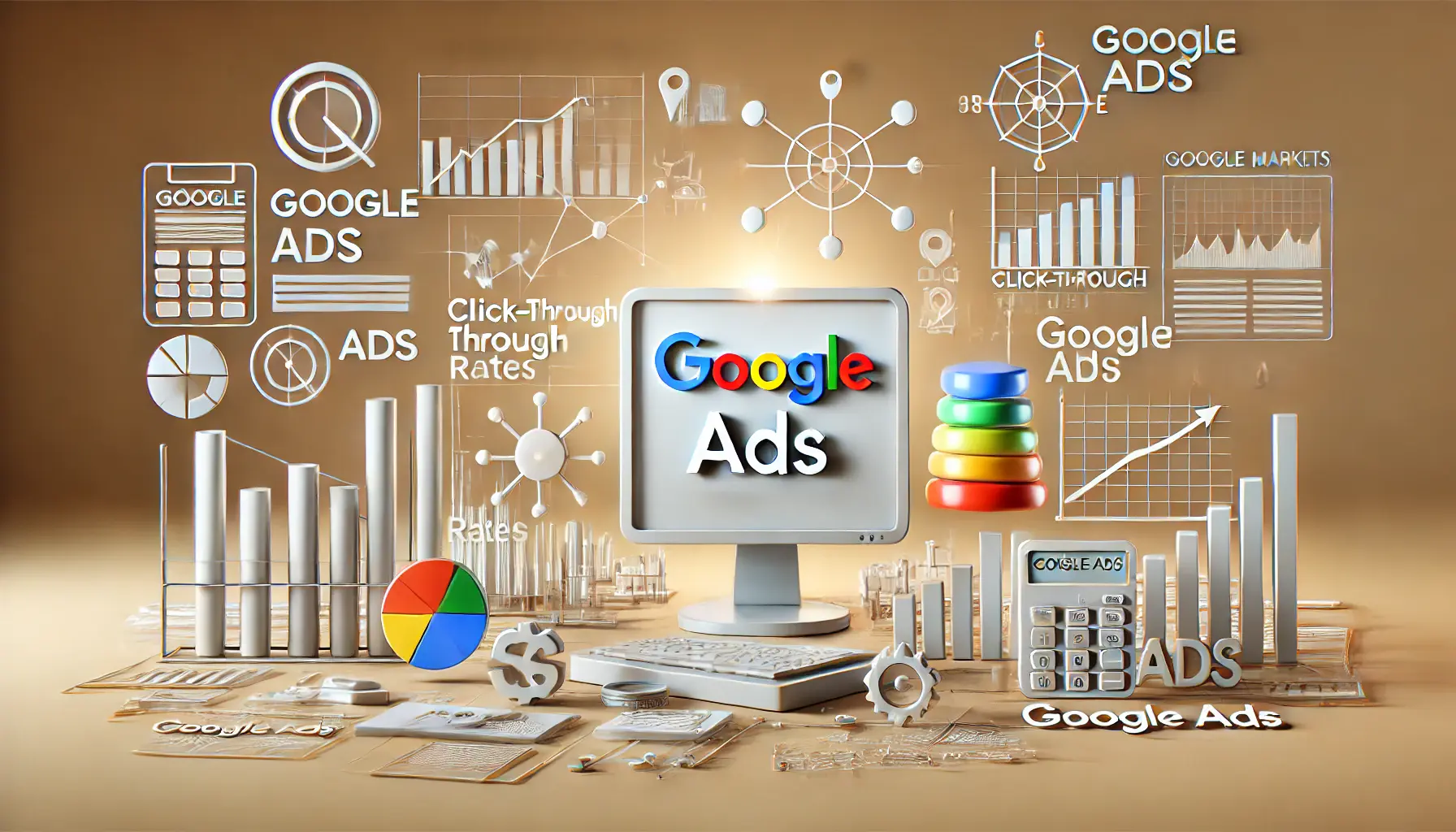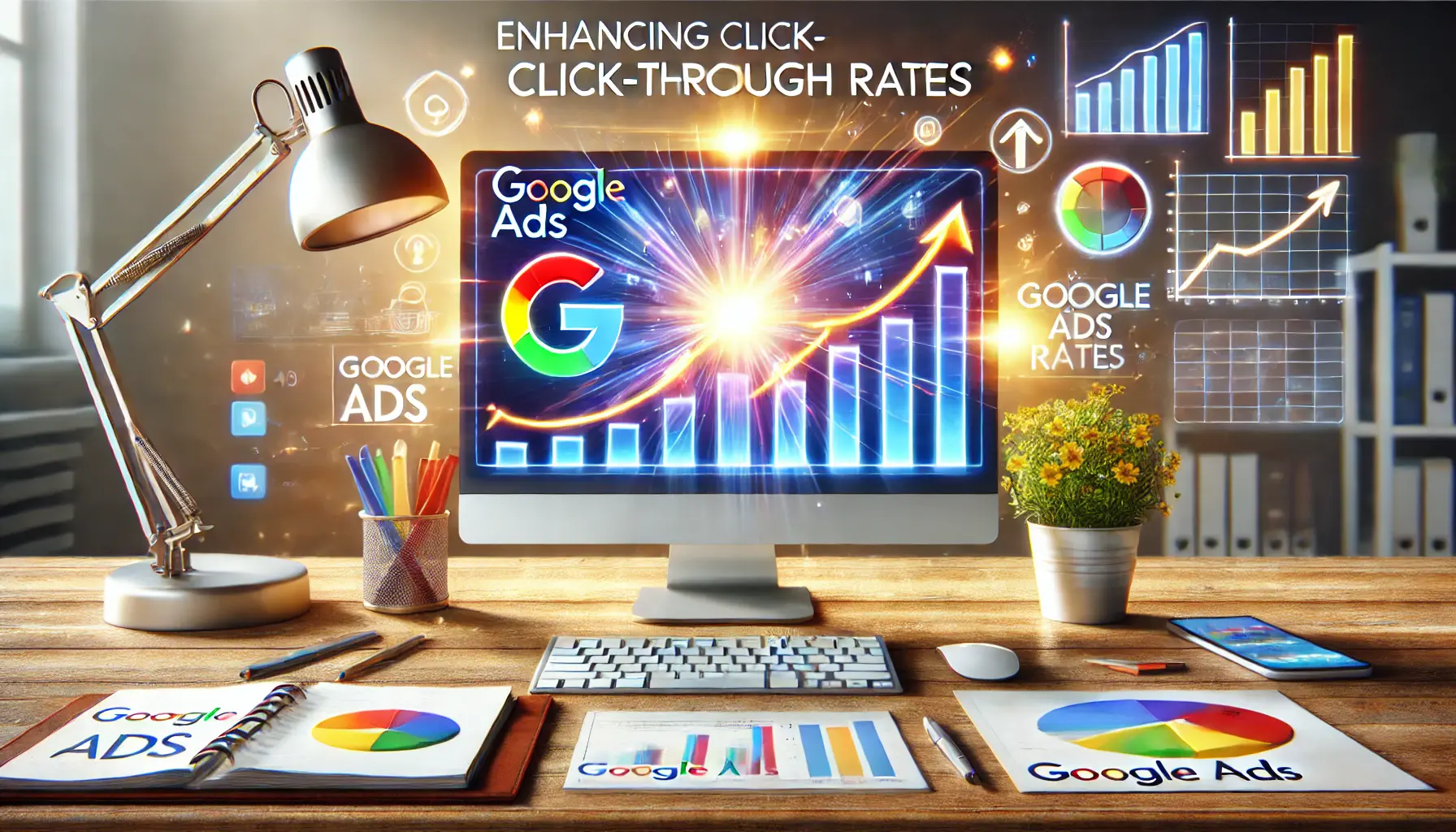(CTR) Click-Through Rate Optimization is a crucial aspect of Search Engine Optimization (SEO) that focuses on increasing the percentage of users who click on a link to a website after seeing it in the search results.
This process is vital for driving more traffic to a website, improving its visibility, and ultimately contributing to its success.
The role of meta titles in this context cannot be overstated.
They serve as the first point of interaction between a website and potential visitors, making their optimization essential for capturing user attention and encouraging clicks.
In the realm of digital marketing, the power of an effectively crafted meta title is undeniable.
It’s not just about embedding keywords; it’s about creating a first impression that resonates with the searcher’s intent, offers clarity, and promises value.
This article delves into the art and science of optimizing meta titles for enhanced click-through rates, providing insights and strategies that are crucial for anyone looking to improve their online presence and performance.
- The Significance of Meta Titles in SEO
- Optimizing Meta Titles for Maximum Impact
- Incorporating SEO and User Experience in Meta Titles
- Advanced Techniques in Meta Title Optimization
- Impact of Meta Titles on Click-Through Rates
- Challenges in Meta Title Optimization
- Future Trends in Meta Title Optimization
- Conclusion: Mastering Click-Through Rate Optimization Through Meta Titles
- FAQs on Click-Through Rate Optimization
The Significance of Meta Titles in SEO
Meta titles, often the first element a user notices in search engine results, play a pivotal role in influencing click-through rates.
These titles are more than just headings; they are a concise summary of a webpage’s content and purpose.
An optimized meta title not only improves a website’s SEO performance but also significantly impacts user engagement.
It’s the hook that can either draw visitors in or push them away.
Creating an effective meta title involves a delicate balance of incorporating relevant keywords, maintaining brevity, and ensuring clarity.
The inclusion of primary keywords in the meta title is essential for search engines to understand the content’s relevance to user queries.
However, it’s equally important to ensure that these titles are appealing and informative to the users.
A well-crafted meta title succinctly conveys the essence of the webpage, encouraging users to explore further.
Understanding User Intent
Understanding user intent is critical in crafting meta titles that resonate with your audience.
A meta title should align with what users are searching for, addressing their needs or questions directly.
This alignment not only improves the chances of a click but also enhances the overall user experience, as visitors find what they are looking for more efficiently.
For instance, if a webpage is about ‘Organic Gardening Tips,’ the meta title should reflect this topic clearly, such as ‘Top Organic Gardening Tips for Beginners.’
This title not only includes the primary keyword but also specifies the content’s target audience, making it more relevant and attractive to users interested in this subject.
Key Point: An effective meta title is a blend of relevance, clarity, and user intent, acting as a direct response to the searcher’s query.
Optimizing Meta Titles for Maximum Impact
To optimize meta titles effectively, it’s essential to understand the best practices that make them stand out in search engine results.
A well-optimized meta title not only boosts SEO efforts but also captures the user’s attention, leading to higher click-through rates.
Here are key strategies for creating impactful meta titles:
Key Components of an Effective Meta Title
An effective meta title should include several key components to ensure it is both SEO-friendly and user-centric.
These components include:
- Relevance: The title must accurately reflect the content of the page. Misleading titles can harm user trust and website credibility.
- Keyword Integration: Incorporate relevant keywords naturally. This helps in ranking for specific search queries.
- Length: Keep titles under 60 characters to ensure they display properly in search results without being truncated.
- Uniqueness: Each page should have a unique title to stand out and avoid internal competition within the site.
- Clarity: The title should be clear and easy to understand, providing users with a precise idea of the page content.
Strategies for Crafting Compelling Meta Titles
Implementing specific strategies can significantly enhance the effectiveness of your meta titles:
- Start with Primary Keywords: Place the most important keywords at the beginning of the title for better visibility.
- Use Action Words: Incorporate verbs that encourage action or evoke curiosity, such as ‘Discover,’ ‘Learn,’ or ‘Explore.’
- Address the User Directly: Use words like ‘You’ or ‘Your’ to create a more personal and engaging tone.
- Highlight Benefits: Mention the key benefits or value that the page offers to the user.
- Test and Refine: Continuously test different titles and analyze their performance to find the most effective formula.
Idea: Experiment with different meta title formats and monitor their impact on click-through rates to identify the most effective approach for your audience.
Incorporating SEO and User Experience in Meta Titles
While optimizing meta titles for search engines is crucial, balancing SEO with a positive user experience is equally important.
The ultimate goal is to create titles that not only rank well but also appeal to and satisfy the user’s search intent.
Here’s how to achieve this balance:
Blending SEO with User Engagement
To effectively blend SEO with user engagement in meta titles, consider the following aspects:
- User-Centric Approach: Craft titles that speak directly to the user’s needs and interests. This approach ensures that the title is not only SEO-friendly but also resonates with the target audience.
- Keyword Relevance: Use keywords that accurately reflect the content of the page and match the user’s search intent. This helps in attracting the right audience and improving click-through rates.
- Emotional Appeal: Incorporate emotional triggers or power words that can create a connection with the user, making the title more compelling and clickable.
Optimizing for Search Intent
Understanding and optimizing for search intent is key to creating effective meta titles:
- Identify Intent: Determine whether users are looking for information, making a purchase, or seeking a specific service.
- Match Content: Ensure that the meta title aligns with the content of the page and the user’s expected outcome.
- Use Specific Keywords: Include keywords that are specific to the user’s search intent to improve relevance and targeting.
By focusing on both SEO and user experience, meta titles can effectively attract and engage the right audience, leading to higher click-through rates and better overall performance of the website.
Note: The synergy between SEO optimization and user experience in meta titles is a dynamic process that requires continuous testing and adaptation.
Advanced Techniques in Meta Title Optimization
Advancing beyond basic optimization strategies, there are several sophisticated techniques that can further enhance the effectiveness of your meta titles.
These methods focus on leveraging deeper insights into SEO and user behavior to craft titles that excel in both performance and engagement.
Leveraging Semantic SEO
Semantic SEO involves understanding the intent and contextual meaning behind search queries.
To apply this in meta titles:
- Use Related Keywords: Incorporate semantically related keywords to cover a broader range of relevant queries.
- Contextual Relevance: Ensure that the title reflects the context of the content, aligning with the user’s search purpose.
- Natural Language: Use natural, conversational language that resonates with how real users search and speak.
Utilizing Data-Driven Insights
Employing data-driven insights can significantly refine your meta title strategy:
- Analyze User Data: Study user behavior and preferences to understand what attracts and engages your target audience.
- Competitor Analysis: Observe how competitors frame their meta titles and learn from their successes and shortcomings.
- Performance Metrics: Regularly review your titles’ performance using analytics tools to identify patterns and areas for improvement.
Advanced techniques in meta title optimization involve a deeper understanding of both the technical aspects of SEO and the nuances of user behavior.
By integrating these sophisticated methods, you can create meta titles that not only rank well but also captivate and convert your target audience.
Featured Info: Embracing advanced optimization techniques for meta titles is a continuous process, requiring ongoing learning and adaptation to the ever-evolving digital landscape.
Impact of Meta Titles on Click-Through Rates
The impact of well-optimized meta titles on click-through rates (CTR) is profound.
Meta titles serve as the primary anchor for users deciding whether to click on a link.
A compelling meta title can significantly increase the likelihood of a user choosing to visit a webpage, thereby enhancing the CTR and driving more traffic to the site.
Quantifying the Impact on CTR
To understand the tangible impact of meta titles on CTR, consider these factors:
- Visibility in SERPs: A well-crafted meta title stands out in search engine results, attracting more clicks.
- User Engagement: Titles that resonate with users’ search intent and expectations are more likely to be clicked.
- Brand Perception: Effective meta titles can enhance brand recognition and trust, encouraging repeated visits and clicks.
Case Studies and Real-World Examples
Examining real-world examples and case studies can provide valuable insights into the impact of meta titles on CTR:
- Industry Benchmarks: Analyzing industry-specific CTR benchmarks can help gauge the effectiveness of your meta titles.
- Success Stories: Reviewing case studies where changes in meta titles led to significant improvements in CTR can offer practical strategies and inspiration.
- Experimentation Results: Conducting A/B testing on different meta title variations can reveal what works best for your audience and content.
Understanding the direct impact of meta titles on click-through rates is crucial for SEO success.
By analyzing and applying the insights from real-world data and case studies, you can craft meta titles that not only improve your site’s visibility but also effectively drive user engagement and traffic.
Truth: The right meta title can transform a webpage’s performance, turning it from a mere search result into a frequently clicked and visited resource.
Challenges in Meta Title Optimization
While optimizing meta titles is a key component of SEO strategy, it comes with its own set of challenges.
Navigating these challenges effectively is crucial for creating meta titles that not only rank well but also resonate with the target audience.
Common Obstacles in Meta Title Creation
Several common obstacles can impede the effectiveness of meta titles:
- Keyword Overstuffing: Balancing the inclusion of relevant keywords without overstuffing is a delicate task. Overuse of keywords can lead to penalties from search engines and diminish user engagement.
- Staying Within Character Limits: Crafting a compelling and informative title within the character limit set by search engines can be challenging. Titles that are too long may be truncated, losing their intended impact.
- Maintaining Relevance and Clarity: Ensuring that the meta title accurately reflects the content of the page while being clear and engaging is a key challenge.
Overcoming Optimization Hurdles
To overcome these challenges, consider the following strategies:
- Focus on User Intent: Prioritize the user’s search intent over keyword density. A title that addresses the user’s needs and queries is more likely to perform well.
- Use Synonyms and Variants: Incorporate synonyms and variants of your primary keywords to avoid repetition and broaden your reach.
- Regular Review and Adaptation: Continuously monitor the performance of your meta titles and be ready to adapt them based on changing trends and user behavior.
Addressing the challenges in meta title optimization requires a blend of creativity, strategic thinking, and ongoing analysis.
By acknowledging and tackling these obstacles, you can craft meta titles that effectively capture user attention and improve your website’s overall SEO performance.
False Information: Assuming that once a meta title is set, it doesn’t need to be revisited or updated. The truth is, continuous optimization and adaptation are key to maintaining effective meta titles.
Future Trends in Meta Title Optimization
As the digital landscape continues to evolve, staying ahead of the curve in meta title optimization is crucial.
Emerging trends and advancements in search engine algorithms will shape the future of how meta titles are crafted and their impact on SEO and user engagement.
Emerging Trends in SEO and Meta Titles
Key trends that are likely to influence the approach to meta title optimization include:
- Artificial Intelligence and Machine Learning: Search engines are increasingly using AI and machine learning to understand user intent and content relevance, making it essential to create more sophisticated and contextually relevant meta titles.
- Voice Search Optimization: With the rise of voice search, optimizing meta titles for conversational queries becomes important. This involves using natural language and question-based formats.
- Mobile-First Indexing: As mobile searches dominate, creating concise and mobile-friendly meta titles that cater to smaller screens and shorter attention spans is crucial.
Adapting to Future SEO Changes
To adapt to these future trends, consider the following:
- Stay Informed: Keep up-to-date with the latest SEO trends and algorithm updates to understand how they might affect meta title optimization.
- Embrace Flexibility: Be prepared to adjust your strategies as new trends emerge. Flexibility and adaptability are key to staying relevant in the ever-changing SEO landscape.
- Focus on User Experience: Regardless of trends, the user experience should always be at the forefront. Creating meta titles that are user-friendly and informative will remain a constant priority.
The future of meta title optimization is dynamic and requires a proactive approach to keep pace with the evolving SEO practices.
By embracing new trends and focusing on creating user-centric meta titles, you can ensure that your website remains competitive and continues to perform well in search engine rankings.
Idea: Regularly experiment with new formats and styles in your meta titles to see how they align with emerging trends and user preferences.
Conclusion: Mastering Click-Through Rate Optimization Through Meta Titles
In the realm of SEO, the significance of meta titles in driving click-through rates cannot be overstated.
As the digital landscape evolves, the art of crafting compelling meta titles remains a cornerstone of effective SEO strategy.
The journey of optimizing these titles is marked by a constant balancing act between SEO requirements and user engagement, necessitating a deep understanding of both search engine algorithms and user behavior.
Key Takeaways for Effective Meta Title Optimization
Reflecting on the insights gathered, several key takeaways emerge:
- Relevance and clarity in meta titles are paramount for attracting and retaining user attention.
- Incorporating SEO best practices, while keeping the user’s search intent in focus, is crucial for higher click-through rates.
- Adapting to emerging trends, such as voice search and AI-driven search algorithms, is essential for staying ahead in the SEO game.
As we look towards the future, the landscape of meta title optimization will continue to evolve.
Staying informed and adaptable to these changes will be key to maintaining and enhancing the effectiveness of your SEO efforts.
The ultimate goal remains clear: to craft meta titles that not only rank well but also resonate with and captivate the target audience, thereby maximizing click-through rates and driving the desired web traffic.
Final Thoughts on Click-Through Rate Optimization
In conclusion, the journey of optimizing meta titles for improved click-through rates is a continuous one, filled with learning and adaptation.
By embracing a user-centric approach, leveraging data-driven insights, and staying attuned to the latest SEO trends, you can effectively enhance your website’s visibility and user engagement.
Remember, in the dynamic world of SEO, the power of a well-crafted meta title can make all the difference in achieving your digital marketing goals.
Want your website to top Google search rankings? Leave the SEO to our professional agency!
FAQs on Click-Through Rate Optimization
Delve into the frequently asked questions about Click-Through Rate Optimization to enhance your understanding and strategy:
A good click-through rate varies by industry, but generally, rates above 2% are considered effective in driving sufficient user engagement.
Improve CTR by optimizing meta titles and descriptions, using relevant keywords, and creating compelling content that matches user intent.
While CTR is not a direct ranking factor, it indirectly impacts SEO by indicating content relevance and user engagement to search engines.
Meta titles are crucial in CTR optimization as they are the first element users see in search results, influencing their decision to click.
Yes, A/B testing different meta titles and descriptions can identify which variations resonate best with your audience, improving CTR.
Mobile optimization is vital as a significant portion of searches occur on mobile devices, impacting the visibility and clickability of links.
Yes, tools like Google Analytics and Search Console provide insights into CTR, helping to measure and refine your optimization strategies.
Definitely. A positive user experience, facilitated by relevant and engaging content, significantly boosts the likelihood of higher CTR.










